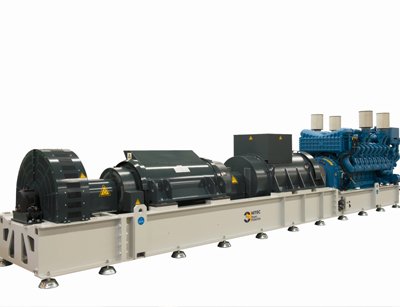Hitec Power Protection launched what it says is one of the most powerful and efficient Uninterruptible Power Supply (UPS) systems which has the added benefits of modularity, building on its second generation product set already in wide use around the world.
It launched its third-generation QPS UPS - which has no-break UPS ratings up to
2400 kW/3000 kVA in 50 Hz operation and up to2880 kW/3600 kVA at 60 Hz - in Singapore last night.
Hitec Asia Pacific sales director Chris Dow said Singapore was chosen for the launch because of the European-based company’s recent growth in the region.
“During the last four and a half years I have predominantly been working in Asia Pacific, and during this period we have grown the business here quite substantially. In APAC we announced about 45 to 50% of the company’s turnover,” Dow said.
“So we know if we develop new products we have to develop something that is very appropriate to the market.”
Dow said Hitec’s UPSs are used in varying industries across the region, from pharmaceutical to semiconductor manufacturing facilities, but data centers is where it is seeing the most demand, with supply to the industry making up 70% of its business.
Much of this is driven by high power demand with the growth of server loadings, energy efficiency and surrounding legislation.
With its new QPS system, Hitec has built on its second generation UPS to meet new demands for modularity – dividing pre-engineering and testing modules, and resilience, which is becoming more important with the take up of cloud computing.
UPS evolution
Hitec developed its first battery UPS system in 1956 and in 1969 developed the first diesel rotary UPS system. Its second generation, which is in wide use today, was designed in 1992 and as of 2000 had a take up of around 2MVA.
The new QPS builds on this, delivering 3MVA and 3.6MVA.
“QPS has much more power, more functionality and more flexibility to give users more efficiency levels,” Dow said.
The Hitec QPS energy storage system has two elements: An Energy Transfer Module (ETM) and a high-energy, low-speed flywheel which spins at 2940 rpm, a level Hitec said can increase maintenance intervals.
It has been designed using pre-engineered modules.
On one side the UPS, sits the diesel engine, which can be provided by a range of different manufacturers for added flexibility.
Between the diesel generator and alternator sits a clutch, similar to its second generation design, but this has a double shaft alternator which allows it to be repositioned.
Hitec has also incorporated a non-free rotating design for energy transfer similar to its model from the1960s but this can store kinetic energy through a modular flywheel that can increase or decrease in watts, which sits at the end of the machine.
“We can also change the energy transfer module on to the alternator as well so we have a lot more flexibility to change the components within, hence the term ‘modularity’,” Dow said.
“Looking at it as a single module, if we are maintaining the energy storage part of the machine we can still use the diesel generator. And if maintaining the diesel engine you can use the other components as a ride-through system so it has a double functionality during its maintenance which gives it far more utility, far more use from a user perspective.”
Overall, Hitec said the diesel engine and generator can together function as a traditional genset even with the energy storage system disconnected and the ETM and flywheel work together as a Rotary UPS “even when the diesel is disabled for maintenance”.
“Those elements can provide kVARs and harmonics mitigation, plus ride-through energy to support the total system,” Hitec said.

